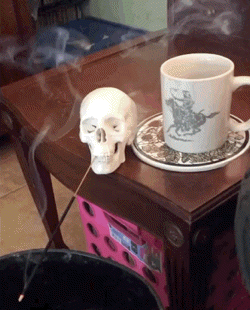Church History
I am a Southern Baptist who ferverently believes in the conception of Christianity presented in the Preface to C. S. Lewis's Mere Christianity. I believe that all Christian groups/denominations are rooms connecting to a great hall of common belief. Individual Christians must find their own rooms, and hold vigorously but not viciously to the tenets of their own group/denomination. To quote Lewis on the matter, "When you have reached your own room, be kind to those who have chosen different doors and to those who are still in the hall. If they are wrong they need your prayers all the more; and if they are your enemies, then you are under orders to pray for them. That is one of the rules common to the whole house." Lewis, Mere Christianity

The study of Christian history is daring to step outside your own group/denominations's room into the hall of common belief and pass through the doors of the other rooms connecting to that great hall. Not every one of these rooms is safe and welcoming. Through some of these doors a priceless trove of treasure may or not lie hidden inside a room where vipers slither across the floor, tetanus broods like a gargoyle on the points and edges of rusty tools and weapons laying about, where venomous  spiders drop unexpectedly from the ceiling, and where the glowing eyes of hungry rats track our movements deeper and deeper into the room. Every Christian era we pass through has been a battleground against the world, the flesh, and the devil on the outside and the false prophets, puffed-up teachers, and the heirs of Judas on the inside. When we enter this cave seeking treasure, we risk poisoning and infections from forgotten heresies and schisms, from despair at the plethora of viewpoints leading us to doubt that finding real truth is possible. The treasure is worth the dangers, but seek carefully as you step out into the hall of common belief and enter the various rooms.
spiders drop unexpectedly from the ceiling, and where the glowing eyes of hungry rats track our movements deeper and deeper into the room. Every Christian era we pass through has been a battleground against the world, the flesh, and the devil on the outside and the false prophets, puffed-up teachers, and the heirs of Judas on the inside. When we enter this cave seeking treasure, we risk poisoning and infections from forgotten heresies and schisms, from despair at the plethora of viewpoints leading us to doubt that finding real truth is possible. The treasure is worth the dangers, but seek carefully as you step out into the hall of common belief and enter the various rooms.
Lesson Plans ♦ How Researching and Teaching This Class Has Changed My Walk
Lessons - (Future Dates = Lessons Still In Development)
Church History Bibliography
INTRODUCTION →
25 Milestones
•
BEGINNINGS →
The Church Expands (July 2019)
•
Irenaeus: Against Heresies (Oct 2019)
•
The Jewish Scriptures: The Early Christian Bible (Nov 2019)
•
Introduction to the Deuterocanon (Jan 2020)
•
Survey of the Deuterocanon (Feb / Mar 2020)
•
New Testament Also Ran`s (Apr 2020)
•
The New Testament (May 2020)
•
Apostolic Fathers (June 2020)
•
Life of Antony (July 2020)
•
Apologists: Justin Martyr & Tertullian (Aug 2020)
•
Sign of the Cross (Sept 2020)
ACCEPTANCE & CONQUEST →
Acceptance And Conquest (Oct 2020) •
Monasticism (Nov 2020) •
Athanasius: On the Incarnation •
Church Councils •
The Iconoclastic Controversy •
Augustine
CHRISTIAN SOCIETY →
Architecture And Worship •
Who Is Mary? •
East West Split •
Thomas Aquinas •
Baptism Through the Centuries •
Praying to the Saints •
Rule of Saint Benedict •
Hospitals •
Universities •
Bernard of Clairvaux •
Devotional Classics •
John Climacticus: The Ladder of Divine Ascent •
The Afterlife
REFORM →
The Reformation and Counter-Reformation •
The Atonement •
Are Baptists Protestants? •
The Eucharist •
Justification By Faith •
The Radical Reformation •
Spiritual Death: Three Possible Interpretations •
The Sacraments •
The Bondage of the Will, Martin Luther
REASON | REVIVAL | REVOLUTION →
Reason | Revival | Revolution •
Baptists in America •
George Whitefield •
Jonathan Edwards •
John Wesley: Christian Perfection •
Charles Finney: Revivals of Religion
CITIES & EMPIRES →
Bonhoeffer and Barmen •
TOWARDS 2100 →
How Researching and Teaching Church History
Has Changed My Christian Walk
 I have had dramatic changes in my life resulting from my research into the history of our Christian faith. Most of those changes involve reclaiming my Christian heritage, re-adopting viewpoints and practices discarded by the Protestant Reformation.
I have had dramatic changes in my life resulting from my research into the history of our Christian faith. Most of those changes involve reclaiming my Christian heritage, re-adopting viewpoints and practices discarded by the Protestant Reformation.
The Protestant separation from our Roman past was urgent and necessary at the time, but times have changed. Far removed from the heat and haste of that clash of consciences, we can cooly re-examine many of those things we cast aside. We can pick up and re-examine these discarded things, discovering that some of those things are exactly the thing we have hungered for to enrich our Christian lives, to make clear to us which fork to take in our current walk with Christ. To those who claim I am advocating a gentle slide back into Romanism, my answer is, "Do your homework." Many of these things predate by 500 to 1000 years the Roman religion Protestants rebelled against. The Sign of the Cross, for instance, was something Tertullian in the 2nd century called an ancient practice of the Church.
- Discovering the Richness in the Eastern Orthodox Church
-
-
Like many Evangelicals, I knew almost nothing about the Eastern Orthodox Church. My research began with web sites and YouTube videos. Next I attended a few services at St Nicholas Greek Orthodox Church. I followed that up with a 4-week catechism administered by Father John Mamangakis from St Nicholas. After that, I continued reading books and articles about the Eastern Orthodox faith.
Plain worship services in stark evangelical church buildings gave me an unrecognized hunger for the beauty of Eastern Orthodox worship. Still, I would not have embraced that form of worship had I not seen the foundation on which such worship was built. The Eastern Orthodox church still bears the scars and proudly waves the victory banner from its war with NeoPlatonism and Gnosticism over the nature of the material world. The Orthodox Church had routed those who claimed that matter was polluted and only spirit was good and had gone on to champion the goodness of this material world that God had made. Inside the Orthodox church, the color and form of the sanctuary's iconography testified that matter is worthy to picture the spiritual; the fragrance of incense suitable symbolizes our prayers; the melodic jangle of bells mimics the clanging of angelic spiritual armor; wine and bread form fitting tools for God to manifest Himself. The material world is God's gift and God's tool for engaging us.
As an Evangelical, I had always disapproved of praying to the saints. I still don't and probably never will pray to the saints, but I have had my understanding expanded to see something I had never seen before about praying to the saints. I had already learned that the Family of God is one body, no matter what nation we live in: space does not separate us. In studying history, I had expanded my view of the Family of God to include the believers from the past and the believers in the future: time and death do not separate us. While looking at an Eastern Orthodox icon of the Heavenly Courtroom, I grasped that the Family of God united believers on Earth and those who had left the Earth: death does not separate us. Bernard of Clairvaux, a Western monk, expanded that vision even more with his remarks Joseph's imprisonment and Pharoh's cupbearer in relation to St Victor the Hermit's intercession for us ...
“Now placed in heaven, he [St. Victor the Hermit] beholds God clearly, revealed to him, swallowed up in joy, but not forgetting us. It is not the land of oblivion in which Victor dwells. Heaven does not harden or straiten hearts but makes them more tender and compassionate; it does not distract minds, nor alienate them from us; it does not diminish, but it increases affection and charity; it augments bowels of pity. The angels, although they behold the face of their Father, visit, run, and continually assist us; and shall they [the saints] now forget us who were once among us, and who once suffered themselves what they see us at present labor under? …Victor is not like that cup-bearer of Pharaoh, who could forget his fellow-captive. He has not so put on the stole of glory himself as to lay aside his pity, or the remembrance of our misery.” Saint Bernard of Clairvaux, Laudeate, 2/26/19
- Changes In My Morning Devotions - Before I Begin My Intercessory Prayers
-
- Burning Incense: Before beginning my prayers, I light a stick of incense. The incense burns while I pray as a physical image for me of my prayers going up to God. Later in the day, the lingering smell of the incense in the area surrounding my "prayer chair"reminds me of prayer.
- Submitting Myself to God With the Sign of the Cross: In my generic southern Evangelical culture, my only childhood experience in regards to the Sign of the Cross was vampire movies: people crossed themselves when Count Dracula's name came up in conversation. Within 6 months of starting my Church history study, I began starting my morning prayers with the Sign of the Cross as a sign of my assent to Romans 12:1-2 and in other situations where I needed to remind myself that I was the property of the Holy Trinity, not my own master. Romans 12 1I beseech you therefore, brethren, by the mercies of God, that ye present your bodies a living sacrifice, holy, acceptable unto God, which is your reasonable service. 2And be not conformed to this world: but be ye transformed by the renewing of your mind, that ye may prove what is that good, and acceptable, and perfect, will of God. (View my lesson on the Sign of the Cross.)
- Touch Base With the Past
- My most current historical devotional readings have included the 1549 version of The Book of Common Prayer (Protestant) and the Litury of St. John Crysostom (Eastern Orthodox).
- Before these two liturgical works, my historical reading involved reading aloud written prayers from anthologies of prayers from the Early Church. Like many Evangelicals, I believe in and practice spontaneous prayer. I had always turned my nose up at reading a written prayer as not being a "real conversation" with God. On my very first day of experimenting with praying written prayers from the 1st century, I discovered that others would (1) pray for things I never would have thought to pray for, and (2) use language that showed me things from a perspective I had never had. I became an instant believer in and advocate for the use of oratios/collects in my private devotions. (Oratio/Collect - a short general prayer used in liturgy).
- Reciting the Nicene Creed: It's taken a while to memorize it, but it has become part of my "assembling of ourselves together" (Hebrews 10:25) with saints of the past, present, and future.
- Reciting the Lord's Prayer: If it's good enough for the Apostles, it's good enough for me.
 spiders drop unexpectedly from the ceiling, and where the glowing eyes of hungry rats track our movements deeper and deeper into the room. Every Christian era we pass through has been a battleground against the world, the flesh, and the devil on the outside and the false prophets, puffed-up teachers, and the heirs of Judas on the inside. When we enter this cave seeking treasure, we risk poisoning and infections from forgotten heresies and schisms, from despair at the plethora of viewpoints leading us to doubt that finding real truth is possible. The treasure is worth the dangers, but seek carefully as you step out into the hall of common belief and enter the various rooms.
spiders drop unexpectedly from the ceiling, and where the glowing eyes of hungry rats track our movements deeper and deeper into the room. Every Christian era we pass through has been a battleground against the world, the flesh, and the devil on the outside and the false prophets, puffed-up teachers, and the heirs of Judas on the inside. When we enter this cave seeking treasure, we risk poisoning and infections from forgotten heresies and schisms, from despair at the plethora of viewpoints leading us to doubt that finding real truth is possible. The treasure is worth the dangers, but seek carefully as you step out into the hall of common belief and enter the various rooms.
 I have had dramatic changes in my life resulting from my research into the history of our Christian faith. Most of those changes involve reclaiming my Christian heritage, re-adopting viewpoints and practices discarded by the Protestant Reformation.
I have had dramatic changes in my life resulting from my research into the history of our Christian faith. Most of those changes involve reclaiming my Christian heritage, re-adopting viewpoints and practices discarded by the Protestant Reformation.